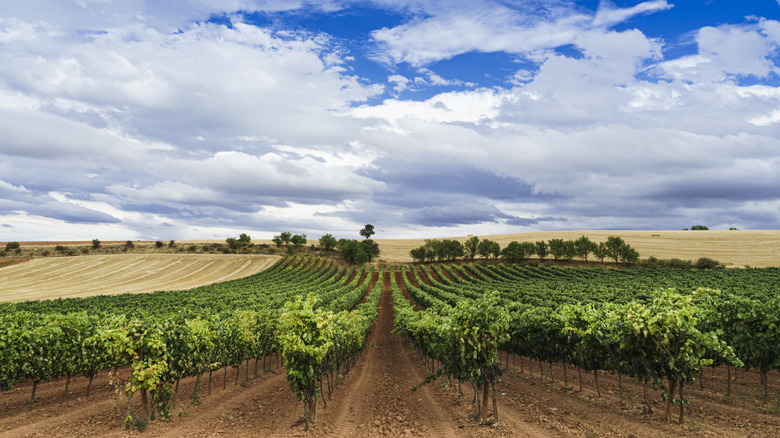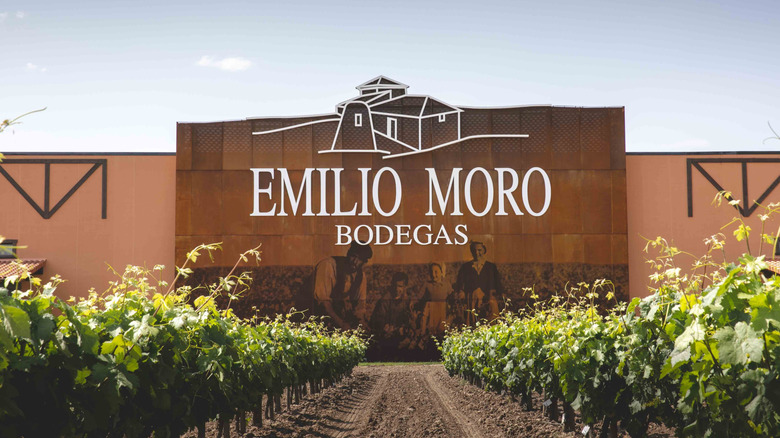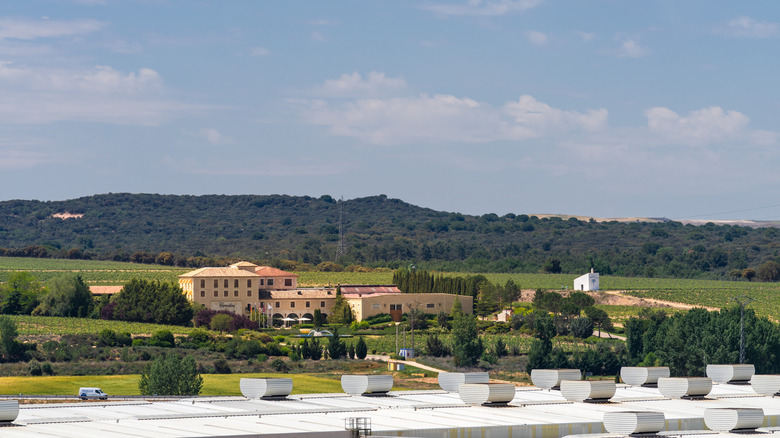Spain's Most Underrated Wine Region Blends Dramatic Scenery With Renowned Reds And Historic Charm
While Spain has 139 official wine regions across the country, most visitors flock to La Rioja. As the most renowned wine region in Spain, La Rioja produces a lovely range of red and white varietals. However, Ribera del Duero is one of Spain's best, most underrated wine regions in the Castilla and León province. Fans of Napa Valley cabs will appreciate the full-bodied red wines coming out of the region that covers a little over 70 miles.
Located a little over two hours southwest of La Rioja and about two hours north of Madrid, Ribera del Duero is a bit too far to do as a day trip (unless you don't mind a really long outing). Instead, spend several indulgent days along a route in the region to experience the best it has to offer. While you could take a train, it would be best to have your own car so you can explore the area freely, visiting the nearby cities of Burgos, Segovia, Soria, and Valladolid.
Spain is one of the best countries for a road trip, as the roads are in excellent condition, easy to navigate, and have plenty of scenic drives on offer. Plan on three to four nights to allow time to get your bearings, visit several wineries and restaurants, and still have time to relax. And as for when to go, avoid summer if you can. Spain is one of the most highly visited countries in Europe, with record tourism numbers expected this year. Opt for a fall trip when temps are cooler and prices are lower; plus, you won't be rubbing elbows with throngs of tourists.
How to set up your wine tasting route in Ribera del Duero
For over 2,000 years, Spaniards have been making wine in Ribera del Duero. While the first wineries date back to the 13th century, the region didn't receive its official Designation of Origin recognition until 1982. Tempranillo is the region's main grape, and there are more than 300 wineries in the region, many of which are family-owned. There are many different wineries and vineyards to explore in the region, and Aranda de Duero is an excellent one to focus on during a first timer's visit. You can even use this website to learn more about the options and plan your route.
Other excellent choices on the wine tasting route include the family-owned Emilio Moro, where you can tour the vineyards, do a wine tasting, or enjoy a traditional lunch. The sustainable Matarromera winery offers tastings of award-winning wines and a virtual tour of the winery and vineyards. For something a little different, try a safari-style jeep tour through the vineyards, paired with lunch at Viñas del Jaro.
Dive deeper into local, rural history at Bodega Severino Sanz. A family affair, the winery was named after the patriarch, Severino. Check out their complete gastronomic package. Priced at around $80 at the time of this writing, the experience includes a guided visit to the winery, a traditional lunch paired with wines, and a visit to their on-site museum, Vigas de Lagar, dedicated to the history of winemaking and local culture. You should also try the tasting workshop at Arzuaga, where you can taste six wines paired with delicious tapas.
Planning your visit to Ribera del Duero
When planning your visit to the region, there are plenty of unique accommodations options to choose from, some of which are former monasteries converted into boutique stays. Most hotels in the area are spacious and historical, set among sprawling vineyards with a pool, as you won't find any chain groups here. At Castilla Termal Monasterio de Valbuena, try the contrast circuit spa experience that is similar to a Turkish bath, pairing wet and dry environments with treatments that alternate between hot and cold. Hotel Torremilanos (pictured) is a property with a history that dates back to 1903 and has various vineyard experience packages available for guests.
Once you've chosen your base, there are several award-winning wines to seek when wine tasting. According to the Decanter World Wine Awards in 2023, among the top 15 wines from Ribera del Duero were Astrales (2019), Balbás Tempranillo Reserva (2018), Bardos Moradillo del Roa (2020), Pago de los Capellanes Dorotea (2018), and Carmelo Rodero Pago de Valtarreña (2020). Keep your eye out for those varietals, but you really can't go wrong with anything made in the region.
If you want a break from the tasting, the tiny-but-charming town of Aranda de Duero, nestled along the Duero River in the heart of the region, is the main town. Visitors can explore 4 miles of underground wine cellars or architectural sites from the 15th and 16th centuries, like the church of Santa María, the Verdugo palace, the Romanesque bridge, and the 17th-century shrine of the Virgen de las Viñas, just outside the city. These historical sites create a stunning juxtaposition to the verdant vineyards in the surrounding area, adding to the region's historical charm.


